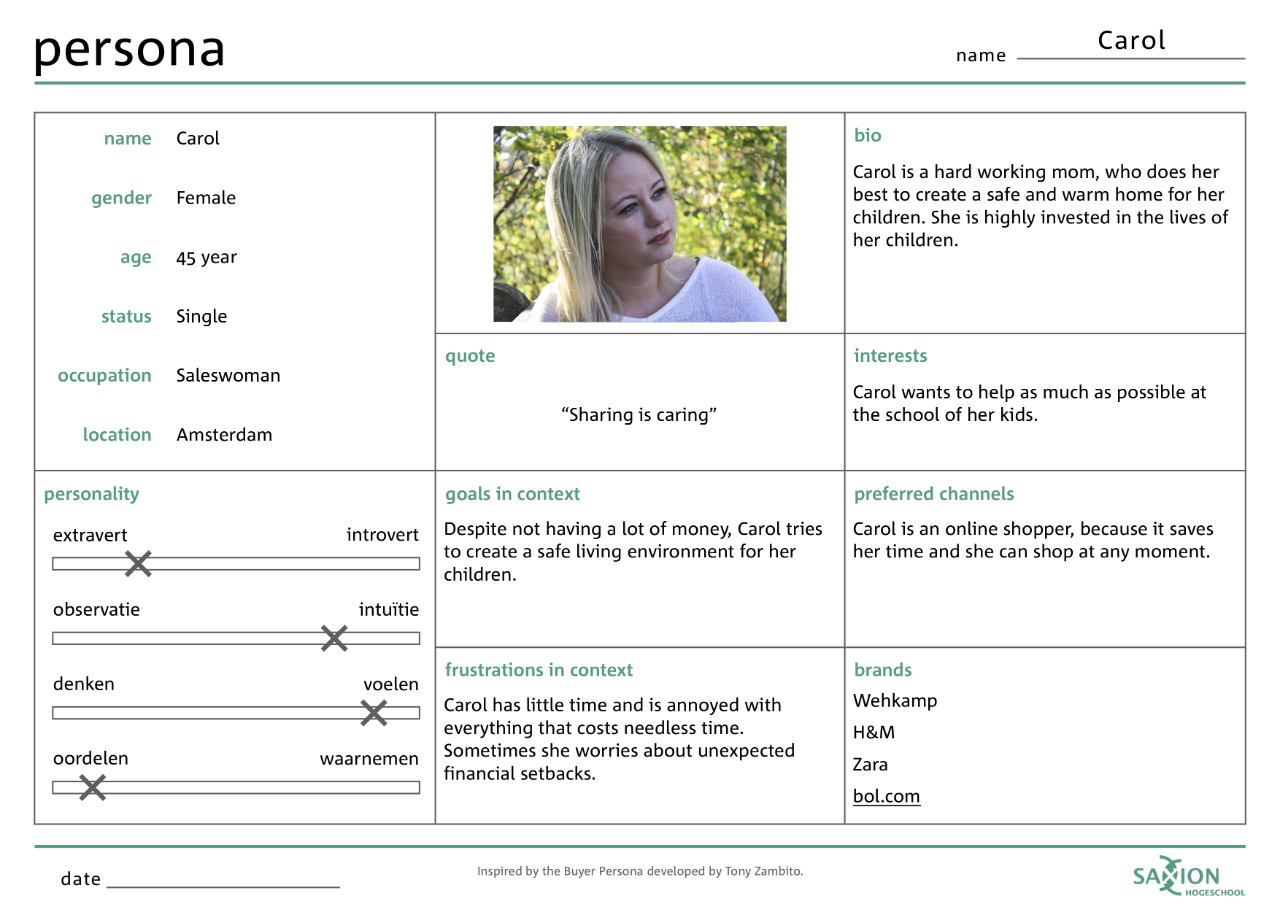Persona

Tips for use
You can easily use the tool yourself. Often it is effective to use the tool in a group, for instance with colleagues. It does not require help from an expert.
Use the template that is applicable for your business by choosing between the Persona and Organisata. For a better understanding of the tool look at the example of Carol as a Persona and the example of Retimed for an Organisata.
How to use
First choose if you want to make a Persona or an Organisata. If your customers are consumers (B2C), create a Persona. If your customers are businesses (B2B), create an Organisata.
Persona
A Persona is a typical customer that purchases your products or services. Your company can have several typical customers, for creating a Persona select just one.
To create a lively Persona, start with adding a picture of a person and give your Persona a name. From all the insights, you gained during the interactions with you customers, filter out the following aspects:
- Personal characteristics: give your Persona characteristics like a name, age, gender, occupation, marital status, location, etc.
- Personality: what is the personality of your Persona? Is he introverted or extroverted? Does he make well considered decisions or does he use his intuition?
- Quote: what is his motto or describe in one sentence what makes your Persona to who he is and does?
- Goals: what does your Persona want to achieve or live for?
- Frustrations: what are reasons why your Persona is unhappy or what aspects is your Persona missing in his / her life?
- Bio: what are the important aspects that are typical for your Persona?
- Interests: what hobbies and passions does your Persona follow besides his/her job?
- Preferred channels: what are typical channels that your Persona uses for contact with businesses?
- Brands: what are typical brands that your Persona buys and is loyal to?
Organisata
Just like the Persona, the Organisata helps you to process the knowledge that you have about your customers or target market.
To create a lively Organisata, start with giving your Organisata a name. From all the insights, you gained during the interactions with you target market, filter out the following aspects:
- Company profile: give your Organisata realistic characteristics like a name, sector, products & services, location, size, etc.
- Offering: with what products or services does the Organisata create value for its customers?
- Mission: what does your Organisata stands for?
- Goals: what does your Organisata want to achieve?
- Frustrations: what are reasons why your Organisata is unhappy or what are aspects she is missing in het practices or products?
- Target group: who are the customers of your Organisata?
- Channels: which channels does your Organisata use to come in contact with (potential) customers?
- New trends and developments: what are the trends and developments in the market in which your Organisata is active?
- Threats: what are the threats in the market in which your Organisata is active?